- Home
- Ellen Datlow
Nebula Awards Showcase 2009 Page 7
Nebula Awards Showcase 2009 Read online
Page 7
I tried the easy answer first. I got shot by Harry Capps, I said. Right through the heart. Was supposed to die. Didn’t.
But then I tried again, because that wasn’t the real answer and if I’d ever loved anyone, I’d loved Wilt. Who’ll take care of the redwoods if I go? I asked him. Who’ll take care of the mountains? He still didn’t get it, though he said he did. I wouldn’t have known how to leave even if I’d wanted to. What I was and what he was—they weren’t the same thing at all anymore. There was no way back to what I’d been. The actual living forever part? That was always, always the least of it.
Which is the last thing I’m going to say on the subject. There is no question you can ask I haven’t already answered and answered and answered again. Time without end.
KAREN JOY FOWLER
The cult in “Always” is a fusion of two real cults. I was researching one—Holy City in the Santa Cruz Mountains—and I found the other—a cult with no name which once existed in Oroville, California. What I took from Holy City was the location and an arcade Holy City ran in order to raise money. What I took from the Oroville cult was the leader’s name, Brother Isaiah, and his claims of immortality. Brother Isaiah said he could confer immortality on anyone. For a fee. He gathered and fleeced his flock and then promptly died of a heart attack. The rest is made up.
“Always” was much improved by the suggestions of the Sycamore Hill workshop and I owe everyone there a great debt of gratitude. But primary thanks go to my editor Sheila Williams, who gave it its final critique and then a space in the pages of Asimov’s. I’d like to dedicate its appearance here to her as it certainly wouldn’t be here without her.
WHERE THE SIDEWALK ENDS
BARRY N. MALZBERG
Barry N. Malzberg’s collected essays on science fiction, Breakfast in the Ruins, was published in 2007; the book conflates his l982 classic Engines of the Night and all of the essays published since. His collection In the Stone House was published in 2000; several of his l970s science fiction novels have been reissued within the past half decade.
He has been publishing science fiction and fantasy for over forty years.
Thirty years ago, Brian Stableford theorized that it was all over for science fiction. It was a literature for a transitional period, the transition between the technological and post-technological eras, which in the West could be placed roughly in the period 1900-1980, when the machines and all of the devices of mass communication went wild and society, however unwillingly, had to adjust to these enormous changes. The automobile, radio, television, mass marketing, national publications, mass advertising, the airplane, the telephone, the atom bomb, the hydrogen bomb, radar, the bombsight, the typewriter, the computer. Enormous changes all seemingly at the last minute.
Science fiction, a literature showing the integration of technology into the culture, on Earth or off, was evolved as a kind of protocol. It indicated means—multiple, often conflicting means—of adjustment. Wasn’t it Gernsback the Founder (science fiction as a distinct genre is commonly dated as originating with the April 1926 issue of Amazing Stories) who proposed that this new literature of science would encourage young boys to pursue careers in science? Sure, there were crazy extrapolations to the stars, monsters prowling the spacecraft, radio cabinets on rubbery legs lighting cigarettes for their owners . . . still, that originating purpose was present in every Campbell editorial, every Case of Conscience, every curse of Gully Foyle . . . science fiction would enable us to imagine and then practice ways to live in a world that technology had overtaken and utterly changed.
That era of adjustment, Stableford wrote in 1978, was ending. We had adjusted more or less, had adjusted as best we could anyway. Science fiction had served its purpose; now in a time when technology was becoming fully integrated, it was only an appendix, a vestigial form attached only through inheritance. Decadence—form prevailing over function—would prevail and then the withering into eventual uselessness. Or as John Clute suggested early in the New Millennium, “Science fiction was a 20th century thing, the way that the symphony is essentially a 19th century thing. For a few years it seemed to be riding the saddle on the steed taking us to the future . . . but that is gone now.”
Is this true? There are at least ten ways of looking at a black-bird; certainly this is one of them. These annual Nebula anthologies—of which this is the forty-third—have in their own way tracked the latter course of a genre that was approximately half its present age when the series began, and in many ways Clute and Stableford’s assessment can be seen refracted through the books. Much of the fiction in the most recent volumes isn’t science fiction at all, it is fantasy, and the science fiction content has become blurred in its tilt away from the rigor to which the genre had aspired in its halcyon ’50s. You’ll find the anthologies in the years of this vested third millennium to be suspiciously replete with zombies, voodoo, strange doings in basements, vampires, space travel accomplished through psychic means, alternate histories blurring into or around the known present. This is not your grandfather’s or father’s science fiction and much of it is not science fiction at all. The moving finger having writ and so on. One could well conclude that science fiction, having served its essential, originating purpose as a commercial format, was now, like Marx’s idealized State, in the process of withering away.
This is of course simplistic argument. It avoids—as perhaps Clute and Stableford have also—any real complexity and also the real sociological fact of culture lag: organized society is in a perpetual state of catch-up, its mores and processes and accepted ethics significantly behind the actual pace of change. The culture is still trying to deal with the birth control pill or stem cell research within a Calvinistic frame of denial that was relevant centuries ago but is now inevitably intrusive or irrelevant.
And that might be descriptive of science fiction itself—“inevitably intrusive or irrelevant” in an era when technology and the culture have essentially interfaced, when everything has moved on except, perhaps, First Fandom and the persistent squabblers of the Science Fiction and Fantasy Writers of America. Still, here is the forty-third annual volume in an unbroken run and like its forty-two predecessors it contains some good stories as well as some stories that comprise a statement of other issues, and who knows if a consensus could be reached? These annuals are testimony, a series of friezes that are snapshots of the period, and their very inconclusiveness embraces the point.
“I want forward-looking, affirmative commentary,” the editor of this anthology said to me and then after a long pause, “Except, I guess, from you.” Granted this dispensation I have not looked backward any more than necessary and I refuse to look forward. The present is about all I can handle. But whether science fiction is a finished thing or not, what a glorious instrument it was! The symphony may be a finished thing but, oh, the roar of Brahms and Mahler and even, at its effective end, Franz Schmidt. Oh, the madder music, the wild darkness of the ’50s! Our future may have been snatched away but the past is ours always and, ah: such sweet thunder.
New Jersey, 2008
WHY I WRITE SCIENCE FICTION
KATHLEEN ANN GOONAN
Kathleen Ann Goonan (www.goonan.com) has been writing science fiction for twenty years and gives talks about science, technology, education, and the future. Her latest novel, In War Times, is the American Library Association’s Best Adult Genre Novel of 2007/08. She is working on a new novel, This Shared Dream Called Earth.
In 1959, C. P. Snow gave his famous Two Cultures lecture at Cambridge, in which he spoke of a separation between the culture of science and that of “literary intellectuals.” He said that academe and society in general were separating into scientists and humanists, and that any common language or viewpoint was fast vanishing.
He was right.
Most of the great scientific discoveries of our era—those of Darwin, Einstein, Curie—were made by those who knew how to wield the pen. The great literary harbingers of the modern age, which was ush
ered in by these new insights into the natural world, were Virginia Woolf, James Joyce, and others who used the energy of consciousness to look directly at their own minds. They used literature in ways that reflected the social shocks and indeterminacy revealed by the theory of evolution and the theory of relativity, as well as the perceived fragmentation of time and lives brought about by industrialization.
Sometime in the early sixties, I was sorted into a group defined by “good with words.” I’m not blaming anyone—I was—and yet, I was therefore not given any formal overview of science or mathematics because someone assumed it would be a waste of time. Instead, I was told to solve problems. Achieving the correct answer—learning how to think—was not the point. One was to memorize one particular process with which to achieve the correct answer. But now, I suspect that the teachers didn’t really understand what they were doing and so could not evaluate alternative processes. My good-with-words track had to learn the periodic table, which I did, and dissect a frog, which I did not. Never was it breathed to me why such information might lead to future fascination or might eventually spark my imagination, as words had been doing for quite some time. I read biographies of scientific pioneers with great interest, yet never considered that I might become one, or at least eventually understand what had led to the polio vaccine, which changed my life (I could, thereafter, swim in public pools), sulfa drugs (which saved my life when I got peritonitis), or the atomic bomb (which elicited a Wednesday noon air-raid-signal test for the first fifteen years of my life, although we never, in history or science class, got around to why). I knew about “evolution” because I read the encyclopedia, but I didn’t understand its paradigm-shattering implications. And, by the way, my school system, Fairfax County, Virginia, was then and is now one of the “best” in the country.
A true future scientist would not have let this slow her down for a second, of course. She would have been blowing up her garage or classifying plants with the best of them.
Still. I could have read Darwin, and would have, had it been suggested. I was a curious girl. Instead, I immersed myself, and gladly, in classical, medieval, and seventeenth-century literature. After college, a great stroke of luck, hunger, or foresight caused me to take a master’s-equivalent Montessori certification course. As Maria Montessori was a scientist, and her method of teaching quintessentially scientific, I thereby learned the magic, the potency, of the simple act of dispassionate observation, which is the basis of understanding how children learn.
I caught a glimpse of the other culture.
Like most writers, I always defined myself, past, present, and future, as one. When I finally moved from poet to short story writer to novelist, a strange thing happened. The other culture, the one that sustained my very life but was as invisible and as taken for granted as air, grabbed me and took hold. Books written by scientists in plain English were suddenly available. I noticed that the magazine Science, to which my father subscribed, was actually fascinating. And when I began writing for publication, at age thirty-five, something strange happened. Science fiction came out.
At first, it resembled fantasy, and might feel quite at home today, in a market where science and fantasy freely mix in the same work. But there was no box of old musty pulp magazines under the bed in my grandmother’s guest room lurking in my literary subconscious, ready to supply the rules, the bones, the tone. In 1961, I was reading the big fat paperbacks from Drug Fair that littered the house—Catch-22, Hawaii, Exodus. And though science fiction was quite fairly represented, I rarely read it. I’m not sure why. Just out of high school I worked in a book store, and read just about every Lin Carter Ballantine fantasy out at that time. I also read Steps, Hopscotch, The Trial; anything that brought me into the territory of strangeness; mysteries, philosophy, and history, all at a marvelous discount. Had their work been available, I would have added E. O. Wilson, Oliver Sacks, Freeman Dyson, and, probably, ever more esoteric works. I may even have become interested in pursuing in college the world they opened.
So why write science fiction? Perhaps it was just a process of waking up. Without an overview of how our technological world came about, despite my father’s repeated explanations of how radar works and, for that matter, how everything works, I was previously asleep to everything except the intellectual world of one culture, that of literature. The culture of science was as irrelevant, I thought, as it was impenetrable. And in these rather backward and quaint educational times in which we live, I don’t think that many American children will be pulled toward the culture of science very soon.
But I write SF because I am trying to catch up with the world, to explore the insights that others more accomplished in using the tools of science have had, and to ponder. The fruits of science—artificial DNA, atomic energy, the ability to explore space and the human mind—cannot be ignored, as they are in most literary fiction.
Science has brought our present into being, and will create our future. It is my goal, in the time I have left, to understand. I don’t. I can see only fragments. When they use words, scientists tell stories that often can only be accurately shown through mathematics, which I have not adequately studied. But from those fragments I can read, peopled stories emerge. These stories are niched, labeled, and marketed as science fiction, and they fit all the parameters. Yet, like most science fiction, which encompasses a spectrum of work, they are more than their confining labels. Marketing forces limit us, as writers. They always have. It’s nothing new.
Perhaps, in the future, we will beam our stories at one another in changing patterns of color, like squid, and maybe, enhanced by a singular human grammar, they will mean more than “Let’s mate.” Science fiction is an art form, and to survive, it must grow. Science, and its fiction, is the fabric of the future. No matter what it may be called in the future, it will survive, if literature survives.
At its best, science fiction has the power to unite the two cultures. It has the power to show anything—love, death, war, peace—and the power to ring the great bells.
That is what I’m trying to do, however imperfectly, when I write science fiction.
NEBULA AWARD NOMINEE, SHORT STORY
TITANIUM MIKE SAVES THE DAY
DAVID D. LEVINE
David D. Levine is a lifelong SF reader whose midlife crisis was to take a sabbatical from his high-tech job to attend Clarion West in 2000. He made his first professional sale in 2001, won the Writers of the Future Contest in 2002, was nominated for the John W. Campbell Memorial Award in 2003 and 2004, and won a Hugo in 2006 (Best Short Story, for “Tk’tk’tk”).
“Titanium Mike Saves the Day” was his first appearance on the Nebula ballot. A collection of his short stories, Space Magic, is available from Wheatland Press. He lives in Portland, Oregon, with his wife, Kate Yule, with whom he edits the fanzine Bento, and their website is www.BentoPress.com.
V. An emergency radiation shelter near the asteroid Chiron, December 2144
“Gramma, I’m scared.”
The poor girl wasn’t just scared, she was terrified. Behind a faceplate fogged with rapid breaths, her skin was pale and clammy and her sapphire-blue eyes twitched like small frightened animals.
Helen wasn’t exactly calm herself. “Don’t fret, Sophie,” she said, but her own voice trembled. She muted her helmet mike and took a deep breath before continuing. “We’ll be safe here.” For a while, anyway, she added silently.
In all Helen Buchanan’s seventy-eight years she’d never seen a solar flare so strong come on so fast. They’d had barely enough warning to reach this abandoned mining module before a storm of protons moving at near-lightspeed began to scour this sector of the Belt. And her lightweight two-seater jump bug offered almost no shielding against the radiation, so they were trapped here until the storm passed. Which might be hours, or days, or weeks.
“Now, you just try to keep calm,” she told Sophie, “while I see what we have in the way of supplies.” But the module’s cupboards contained only dust.
Its oxy tanks were still welded to the wall, but when she put her helmet against each one and tapped it with her hand light, all she heard was the dim tink of metal in vacuum.
That wasn’t good. Not good at all.
She took another calming breath, then checked the oxy meter on her wrist: twenty-one hours at the current rate of consumption. She tweaked the mixture a little leaner; it might give her headaches, but that beat the alternative. “All right now, sugar, let me check your tanks.” Helen turned Sophie around, stopping the rotation with a practiced tap on the shoulder as she bent to peer at the girl’s tank-mounted meter. And gasped.
Only six hours left.
“W-what’s wrong, Gramma?”
She considered her response while thinning Sophie’s mix. Panic would drive the child’s oxy consumption up, but she’d know if she was being lied to. She turned Sophie to face herself and looked her straight in the eye. “Well, kiddo, we’re a little light on the oxy. Now, most flares only last a few hours, but this one’s a real whopper—no telling how long it’ll go on.” She reached behind herself and began unshipping her #3 tank. “So I’m going to give you some of mine. Hold still.”

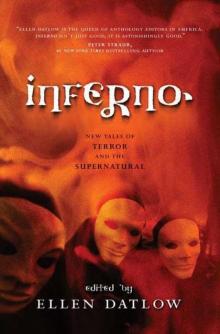 Inferno
Inferno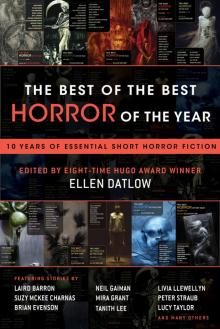 The Best of the Best Horror of the Year
The Best of the Best Horror of the Year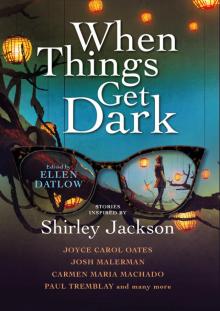 When Things Get Dark
When Things Get Dark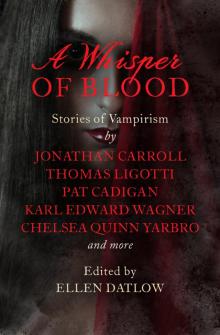 A Whisper of Blood
A Whisper of Blood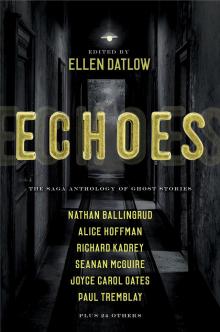 Echoes
Echoes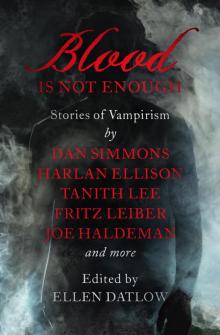 Blood Is Not Enough
Blood Is Not Enough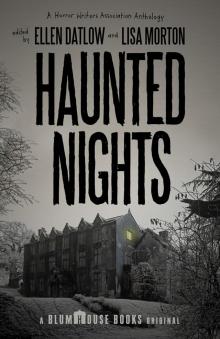 Haunted Nights
Haunted Nights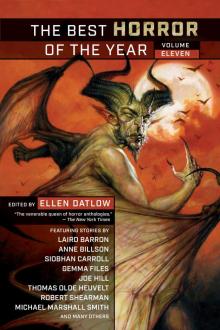 The Best Horror of the Year Volume Eleven
The Best Horror of the Year Volume Eleven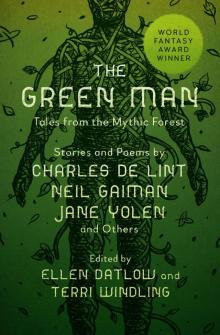 The Green Man
The Green Man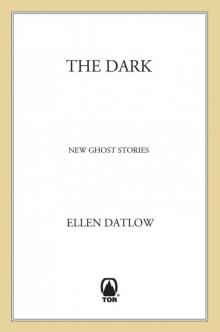 The Dark
The Dark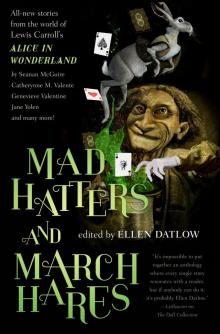 Mad Hatters and March Hares
Mad Hatters and March Hares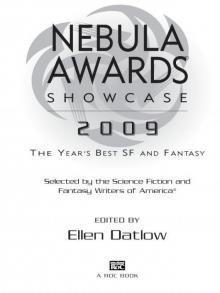 Nebula Awards Showcase 2009
Nebula Awards Showcase 2009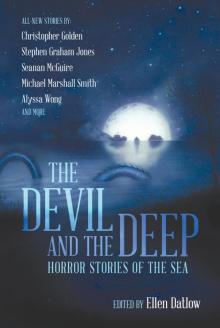 The Devil and the Deep
The Devil and the Deep